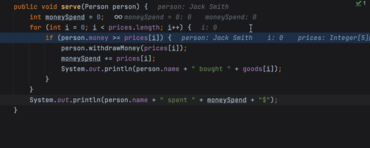Proveedor oficial
Como distribuidores oficiales y autorizados, le suministramos licencias legítimas directamente de más de 200 editores de software.
Ver todas nuestras marcas.
User experience
Editor
Debugger
Profiler
Version control
Run Configurations
Collaborative development
Java
Kotlin
Frameworks and technologies
Scala
JavaScript
Kubernetes
Database tools
Other

Entorno completo de desarrollo Java.
Chatee en vivo ahora mismo con nuestros especialistas en licencias de JetBrains.